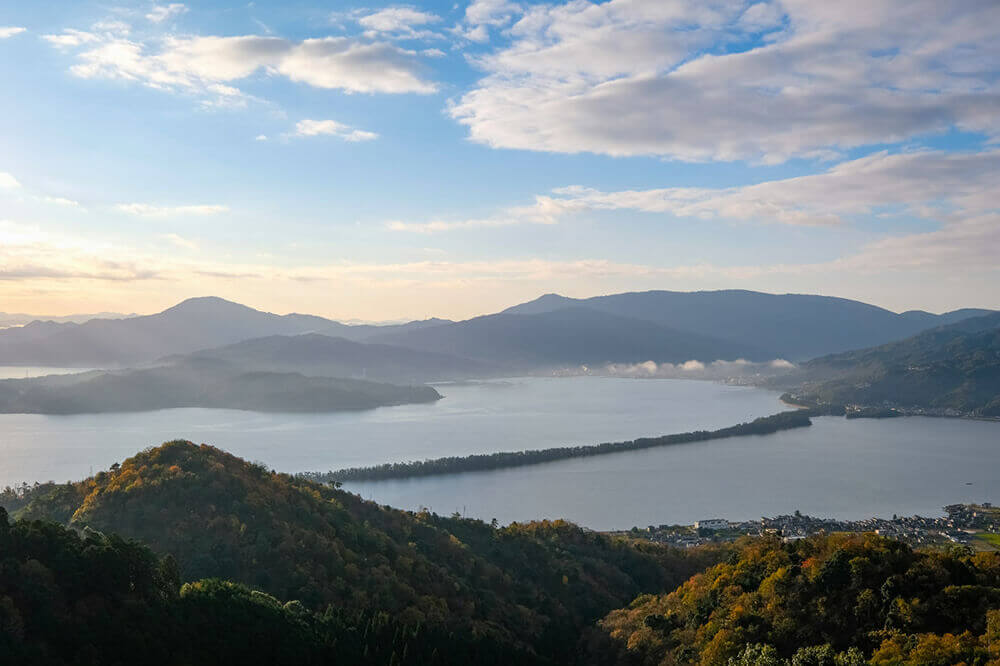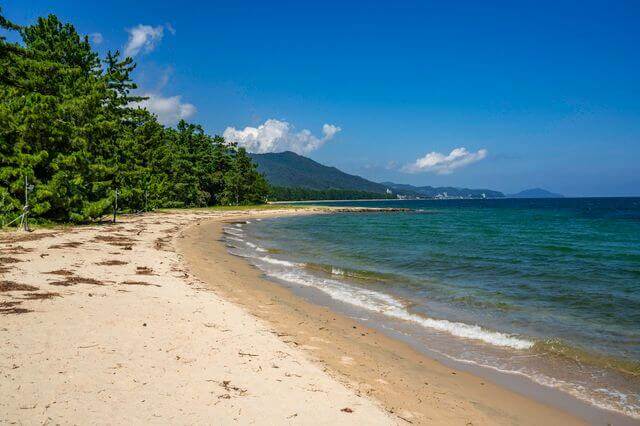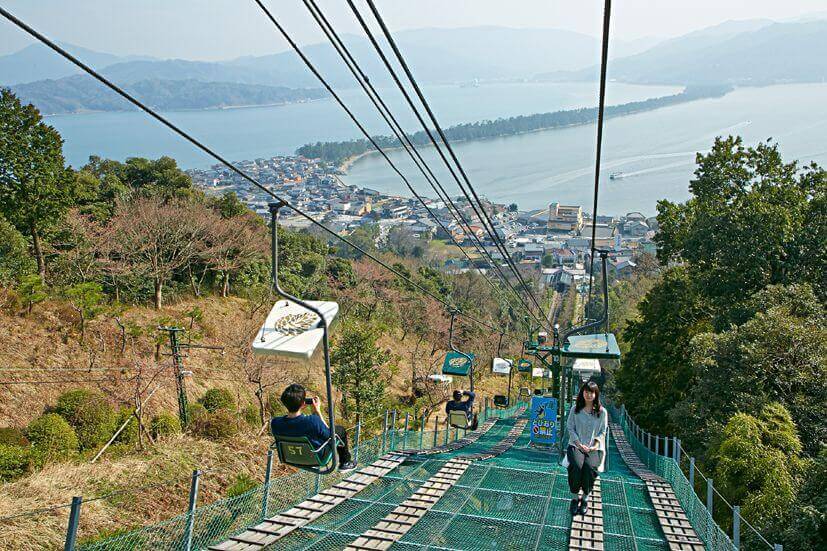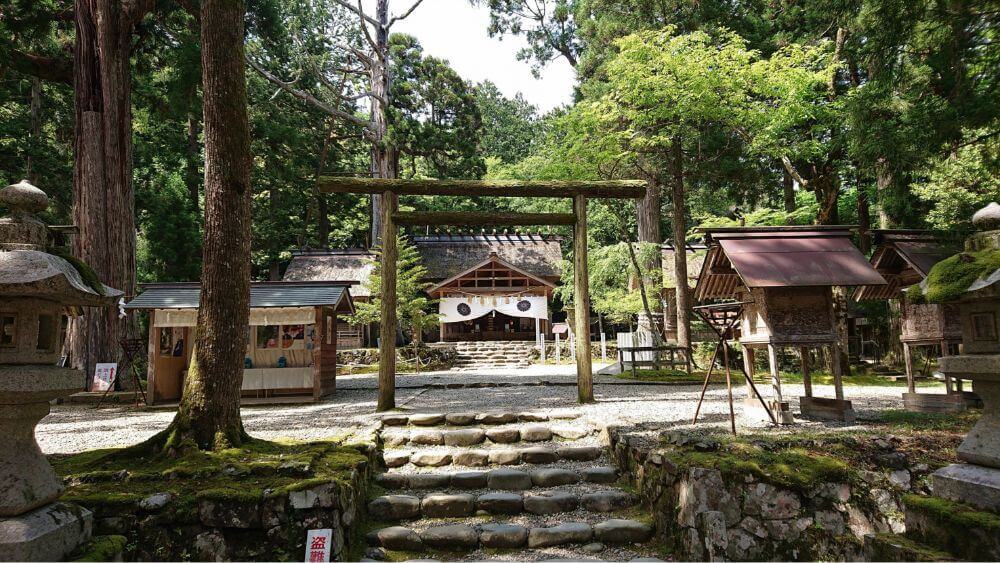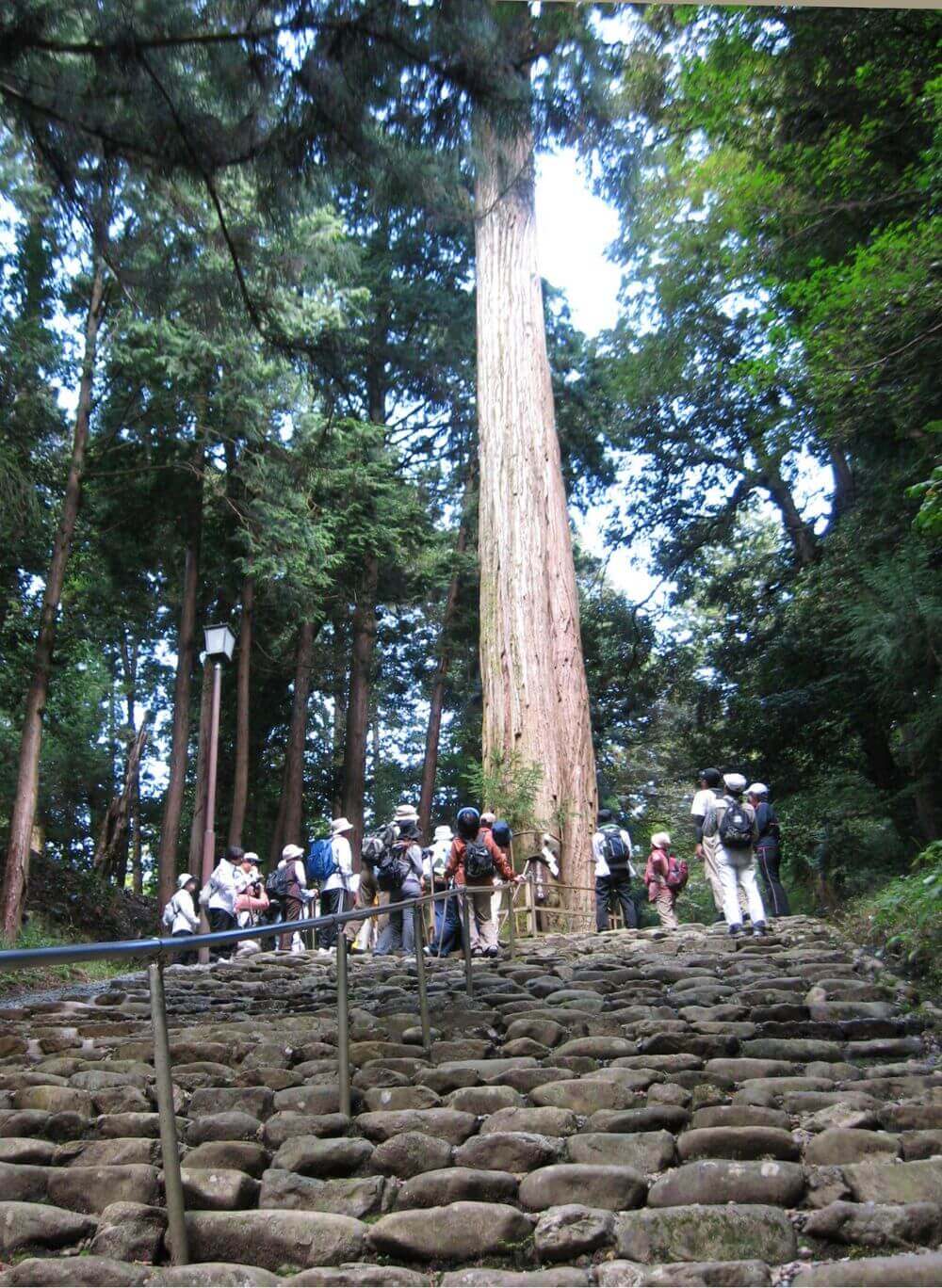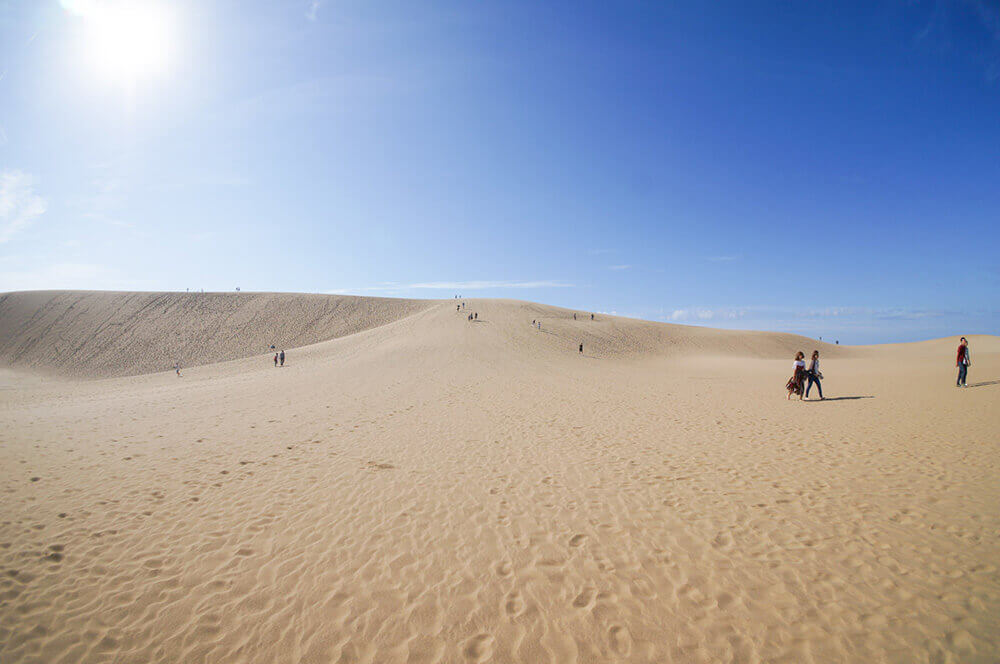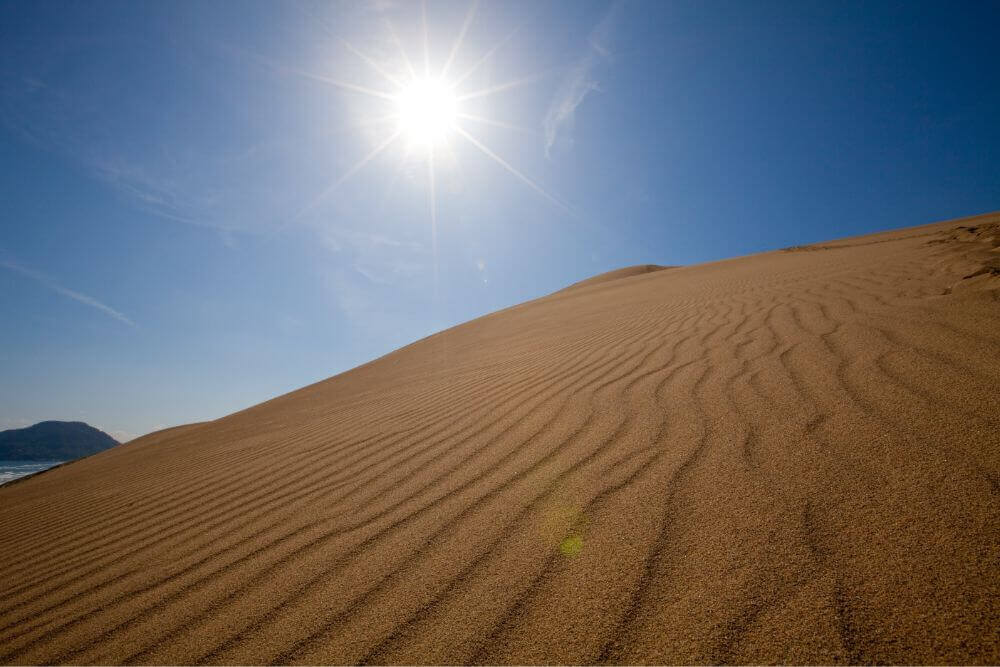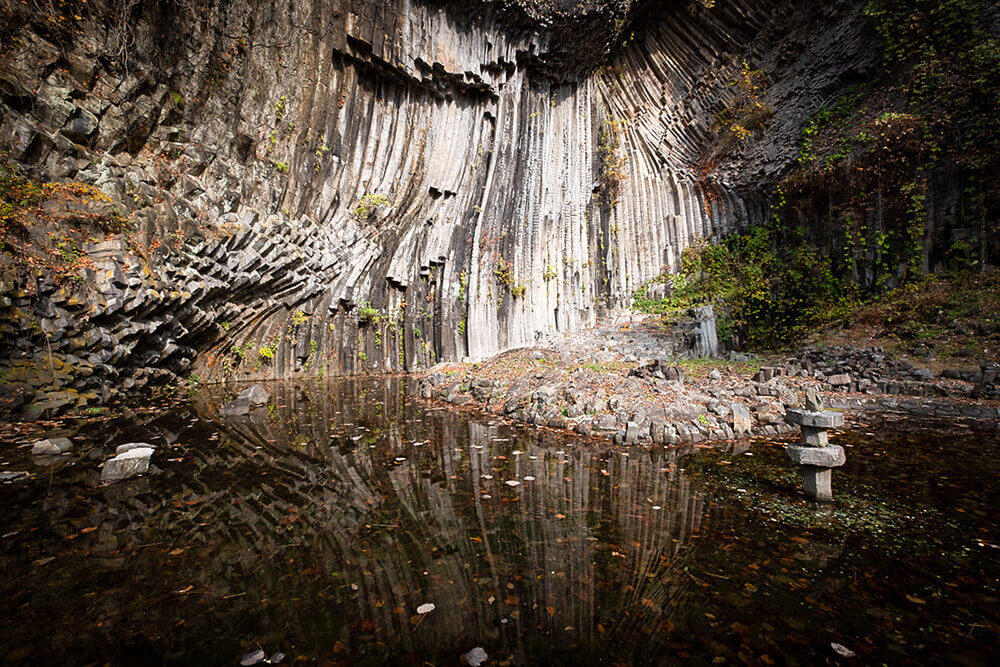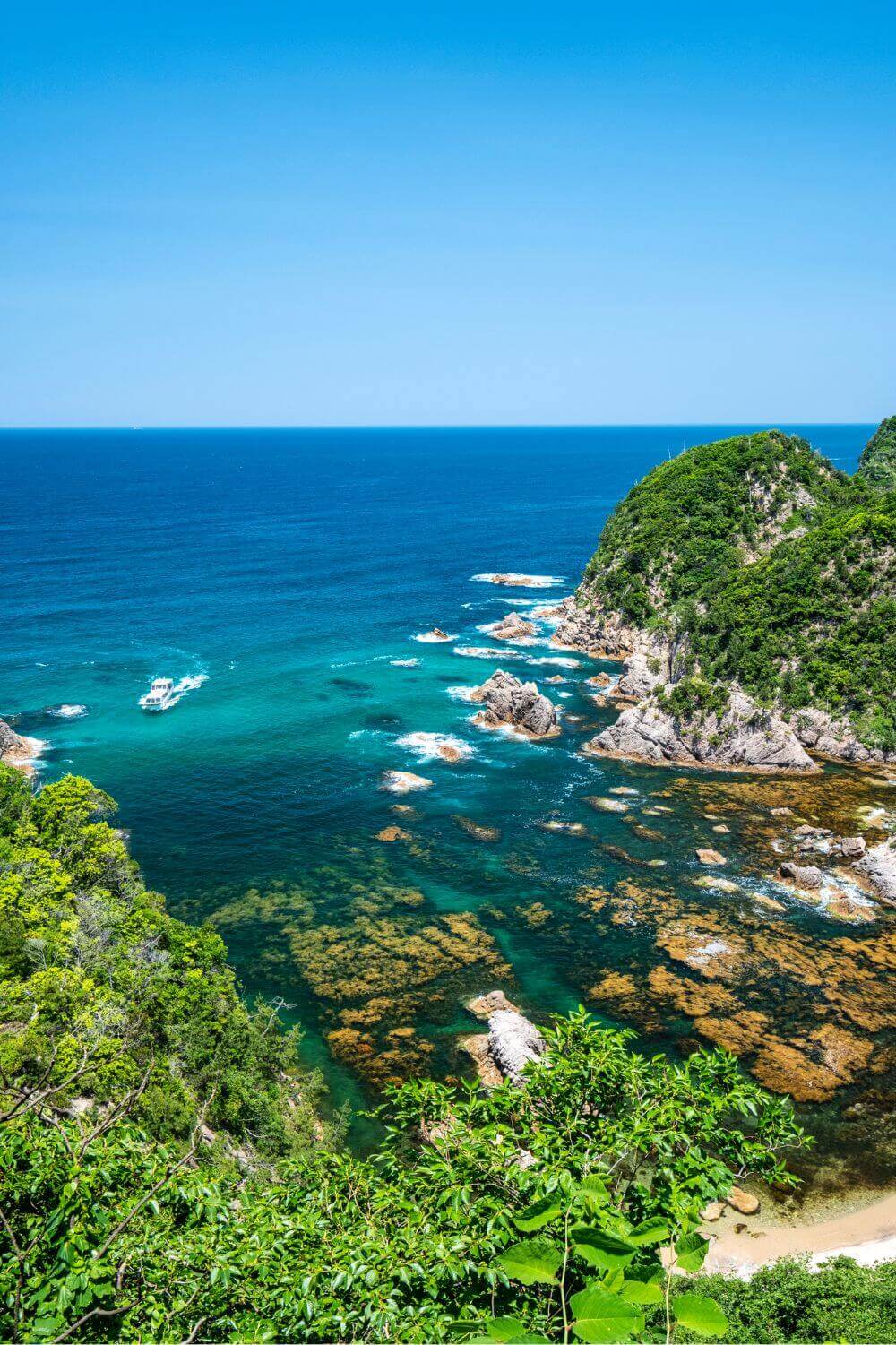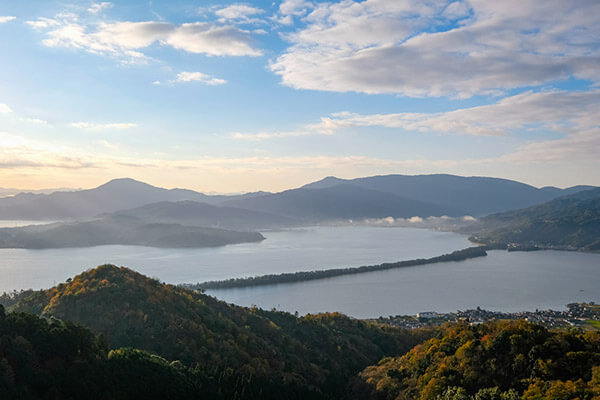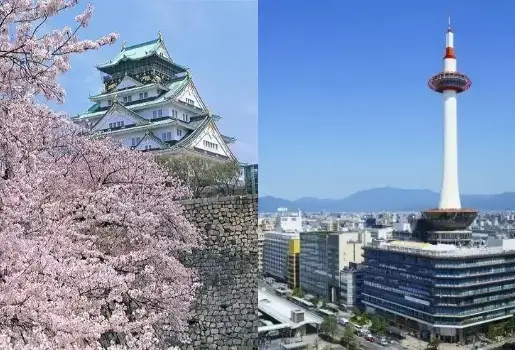SAN'IN COAST
Coastal beauty and grace
Overview
The San'in coastal region runs alongside the Sea of Japan, stretching from the Tango Peninsula in northern Kyoto across Hyogo Prefecture to Tottori Prefecture. This region, inscribed on the list of UNESCO Global Geoparks as San'in Kaigan UNESCO Global Geopark, has developed a terrain, a natural environment, and a way of living which are all entirely unique.
The weather along the San'in coastal region is so characteristically changeable, there's even a saying about it: "Don't forget to bring an umbrella with you even if you forget your lunch box". Its natural circumstances, namely a high level of rainfall as expected from a region facing the Sea of Japan and a terrain that enabled the creation of open harbors, fostered—and continue to foster—the development of a silk manufacturing industry, as well as unique forms of culture such as Kagura, a form of ritual dance. The region is also home to ports which traded with the continent, and even had its own flourishing ancient kingdom.
Walk along the coastline and you will encounter a myriad of beautiful natural features, including cliffs, sandy beaches, pine forests, and sand dunes. There are multiple walking courses which allow you to experience the local nature and everyday life.
The San'in coastal region is also renowned for its abundant and delicious seafood, the result of fertile waters from the mountains that run alongside the coastline and the intricate coastal terrain. The region is home to many onsen (hot springs), so visitors can experience both the sheer indulgence of bathing in hot spring waters and the simple charm of the associated accommodation. Winter brings crab season and with it many tourists, who come to enjoy the local crab dishes and hot springs.
Recommended Spots
-
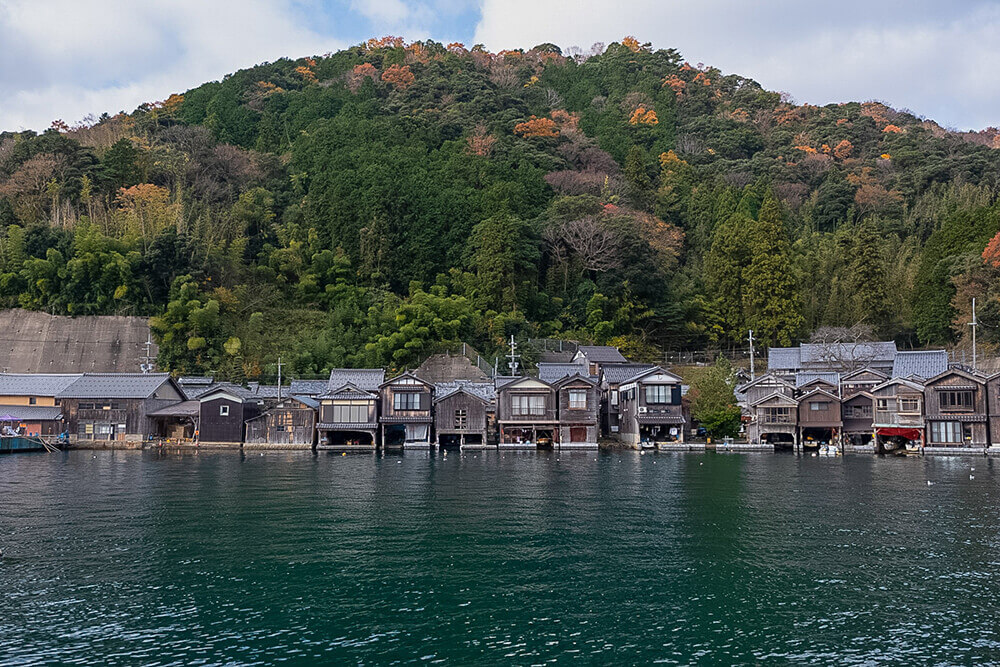 The beautiful boathouses of Ine are a unique sight, where the seaside wooden boathouses appear to be floating. The area maintains a traditional Japanese fishing town atmosphere.Audio Guide
The beautiful boathouses of Ine are a unique sight, where the seaside wooden boathouses appear to be floating. The area maintains a traditional Japanese fishing town atmosphere.Audio Guide -
In the northern districts of Kyoto is the stunning sight of the Amano-hashi-date sandbar. Seen from the Hiryu-kan on the hills above, it resembles a dragon soaring into the sky, and from Kasamatsu Park on the opposite side, it appears as a diagonal line.Audio Guide
-
Moto Ise Naiku Kotai Jingu is one of three shrines known collectively as the Moto Ise Sansha. Said to have been founded before the dawn of the common era, it is dedicated to Amaterasu Sume-Okami. Within the shrine grounds stand giant cedar trees over a thousand years old, and the surroundings are thickly forested. Nearby you will find a place of worship overlooking Himurogatake, a mountain where deities are said to have descended to earth. This is a place where you can truly sense the origins of religious devotion in Japan.
-
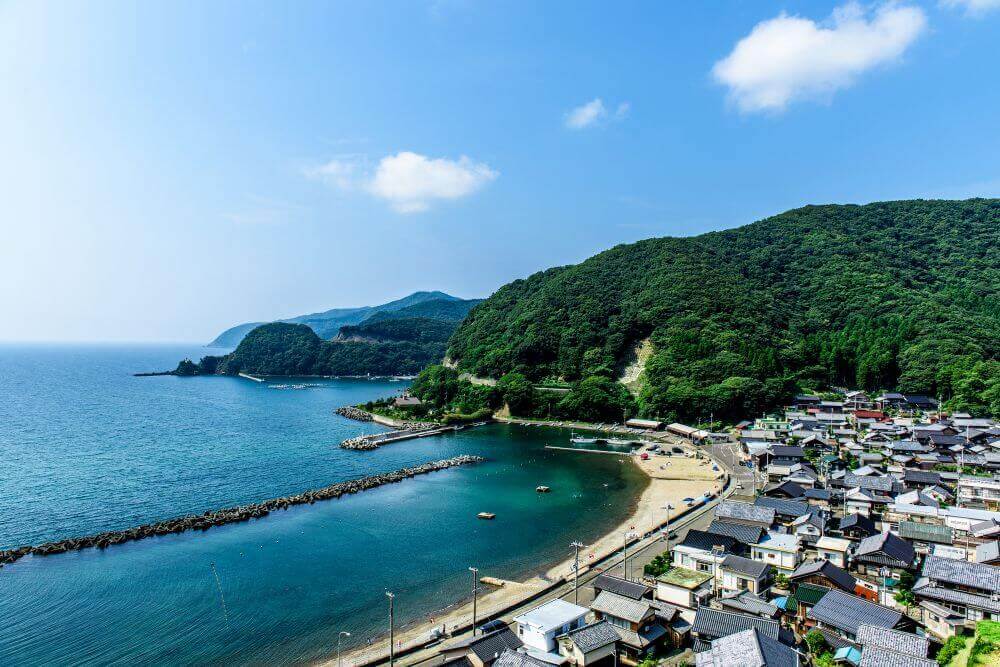 Obama is the starting point of the "Saba Kaido", or Mackerel Highway. Many marine products, including of course mackerel, are landed at Obama port, from where they can be transported along established routes to major cities such as Kyoto and Osaka. From Obama Station, head towards the port to find the fish market, where you can buy super-fresh fish and shellfish. You can also enjoy a trip around the port on a tour boat. The townscape to the west of Obama Station retains the look of some 150 years ago, with its old temples, long-established restaurants, and atmospheric cafes.
Obama is the starting point of the "Saba Kaido", or Mackerel Highway. Many marine products, including of course mackerel, are landed at Obama port, from where they can be transported along established routes to major cities such as Kyoto and Osaka. From Obama Station, head towards the port to find the fish market, where you can buy super-fresh fish and shellfish. You can also enjoy a trip around the port on a tour boat. The townscape to the west of Obama Station retains the look of some 150 years ago, with its old temples, long-established restaurants, and atmospheric cafes. -
 Obama is an iconic port city in Wakasa Bay known for its delicious seafood and fish market. In the early hours of the morning, boats return to the port with fish, which are then laid out at the market for auction. Especially known for Echizen crab and tilefish, the market boasts a rich variety of fish and other seafood that varies with the seasons. You can experience the intense atmosphere at the auction as you watch the professionals size up the best catch and make their bids.
Obama is an iconic port city in Wakasa Bay known for its delicious seafood and fish market. In the early hours of the morning, boats return to the port with fish, which are then laid out at the market for auction. Especially known for Echizen crab and tilefish, the market boasts a rich variety of fish and other seafood that varies with the seasons. You can experience the intense atmosphere at the auction as you watch the professionals size up the best catch and make their bids. -
 Still a treasure trove of food today, the Wakasa area was known in ancient times as a “Miketsukuni” — a region that provides food to the imperial court. At the museum, you can experience the local food culture firsthand. Opportunities are provided to learn about the history and traditional culture of Japanese cuisine, and various workshops are available, including for cooking and craft making. You can also participate in chopstick making, where you will polish lacquered chopsticks with sandpaper to create your own unique pair.
Still a treasure trove of food today, the Wakasa area was known in ancient times as a “Miketsukuni” — a region that provides food to the imperial court. At the museum, you can experience the local food culture firsthand. Opportunities are provided to learn about the history and traditional culture of Japanese cuisine, and various workshops are available, including for cooking and craft making. You can also participate in chopstick making, where you will polish lacquered chopsticks with sandpaper to create your own unique pair. -
 This store features Wakasa-nuri lacquerware made using a traditional technique known as “togidashi.” Dozens of coats of top-grade lacquer are applied to pieces before creating patterns with shells, eggshells, and gold leaf and polishing with stone or charcoal. Taking many months to complete, the finished works boast a characteristic sturdiness and elegance. Kabukusikki-ten offers a rich array of traditional Wakasa-nuri available for you to purchase.
This store features Wakasa-nuri lacquerware made using a traditional technique known as “togidashi.” Dozens of coats of top-grade lacquer are applied to pieces before creating patterns with shells, eggshells, and gold leaf and polishing with stone or charcoal. Taking many months to complete, the finished works boast a characteristic sturdiness and elegance. Kabukusikki-ten offers a rich array of traditional Wakasa-nuri available for you to purchase. -
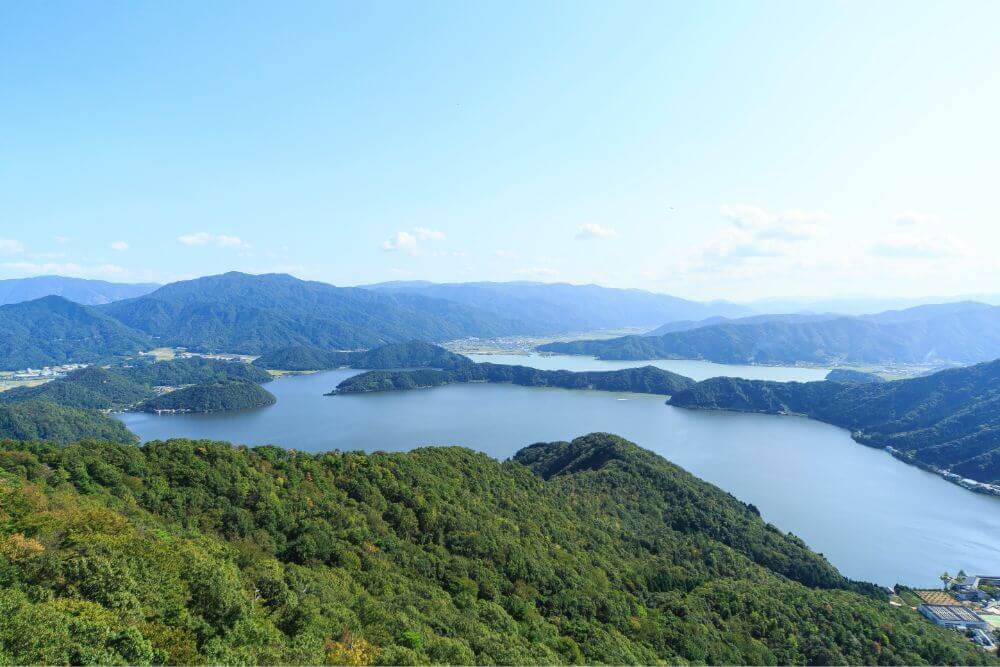 This cycling course goes around the so-called Mikata-goko (Mikata Five Lakes), which are located next to the Sea of Japan and to the northwest of Lake Biwa. Mikata-goko is the collective name for five lakes which are spread out between the towns of Mihama and Wakasa. A circuit of the lakes can be completed in around 3 hours. The lakes have, variously, fresh, brackish, and saline waters, and each is a slightly different color.
This cycling course goes around the so-called Mikata-goko (Mikata Five Lakes), which are located next to the Sea of Japan and to the northwest of Lake Biwa. Mikata-goko is the collective name for five lakes which are spread out between the towns of Mihama and Wakasa. A circuit of the lakes can be completed in around 3 hours. The lakes have, variously, fresh, brackish, and saline waters, and each is a slightly different color. -
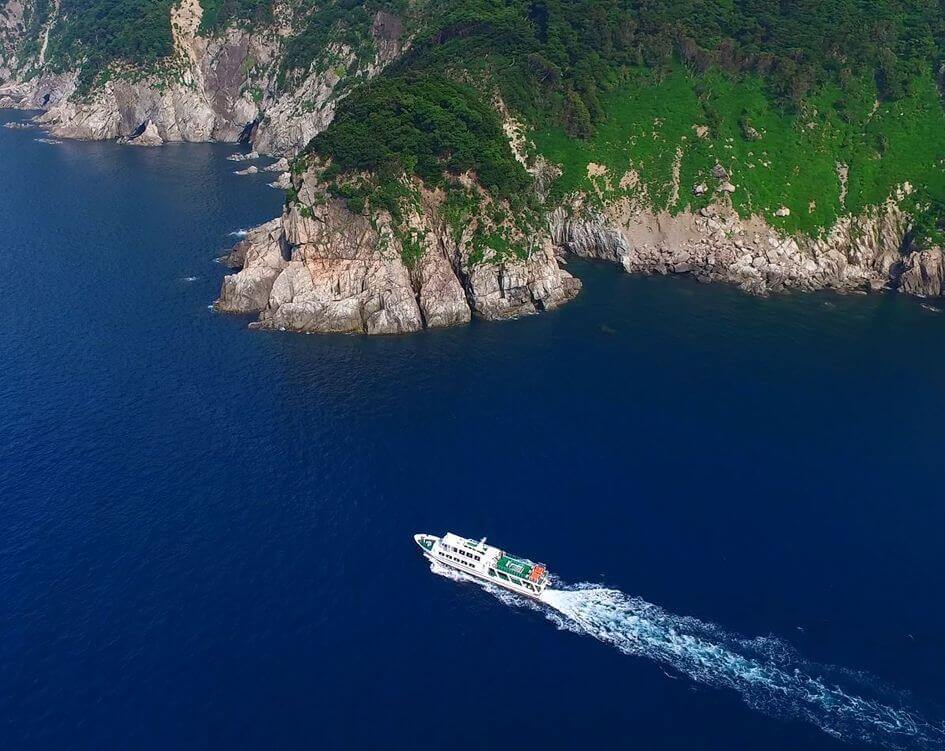 A cruise around Sotomo Arch is an experience provided by Wakasa Fisherman's Wharf. This 60-minute cruising experience allows you to enjoy a dynamic landscape, carved out by the rough waves of the Sea of Japan. The boat trip will take you along 6 kilometers of history and romance, interwoven from beautiful cliffs, uniquely-shaped rocks, and cave entrances. Make sure to enjoy the pleasures of cruising to the full as you take in this work of ocean art, crafted by the surging waves.
A cruise around Sotomo Arch is an experience provided by Wakasa Fisherman's Wharf. This 60-minute cruising experience allows you to enjoy a dynamic landscape, carved out by the rough waves of the Sea of Japan. The boat trip will take you along 6 kilometers of history and romance, interwoven from beautiful cliffs, uniquely-shaped rocks, and cave entrances. Make sure to enjoy the pleasures of cruising to the full as you take in this work of ocean art, crafted by the surging waves. -
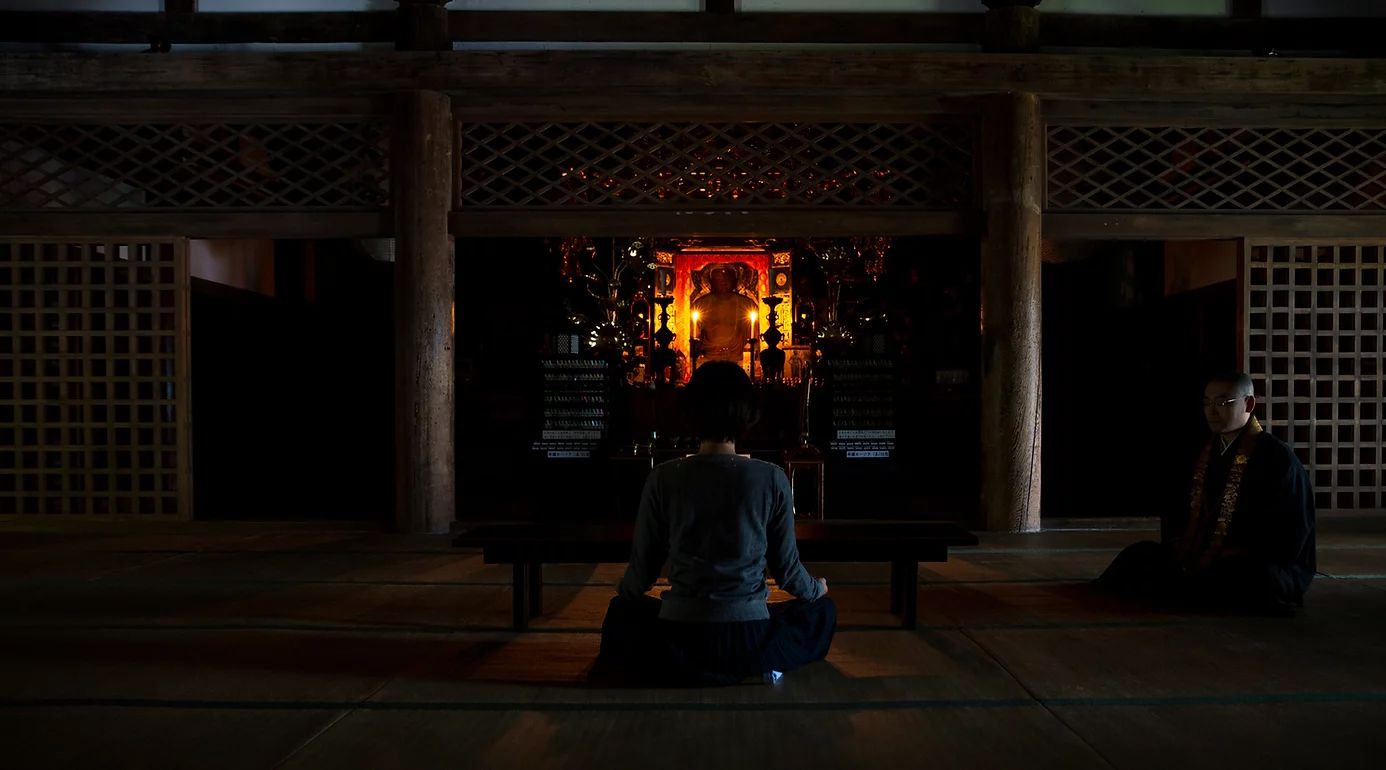 An overnight stay that includes an eight-course “shojin ryori” (vegan temple cuisine) evening meal, as well as breakfast, and a Buddhist meditation experience. Myotsu-ji Temple, located in Matsunaga village, is an ancient temple that has been designated a National Treasure. After staying in the Matsunaga Rokkan Fujiya ryokan (traditional inn) in Matsunaga village, guests first experience Ajikan meditation (comprising breathing techniques and meditation techniques from Shingon Buddhism) at Myotsu-ji Temple in the early hours of the morning. Here you will cleanse yourself, correct your posture, regulate your breathing, and take the time to turn your gaze inwards. After meditation, you can try a traditional breakfast of rice gruel and a boxed meal of shojin ryori dishes.
An overnight stay that includes an eight-course “shojin ryori” (vegan temple cuisine) evening meal, as well as breakfast, and a Buddhist meditation experience. Myotsu-ji Temple, located in Matsunaga village, is an ancient temple that has been designated a National Treasure. After staying in the Matsunaga Rokkan Fujiya ryokan (traditional inn) in Matsunaga village, guests first experience Ajikan meditation (comprising breathing techniques and meditation techniques from Shingon Buddhism) at Myotsu-ji Temple in the early hours of the morning. Here you will cleanse yourself, correct your posture, regulate your breathing, and take the time to turn your gaze inwards. After meditation, you can try a traditional breakfast of rice gruel and a boxed meal of shojin ryori dishes. -
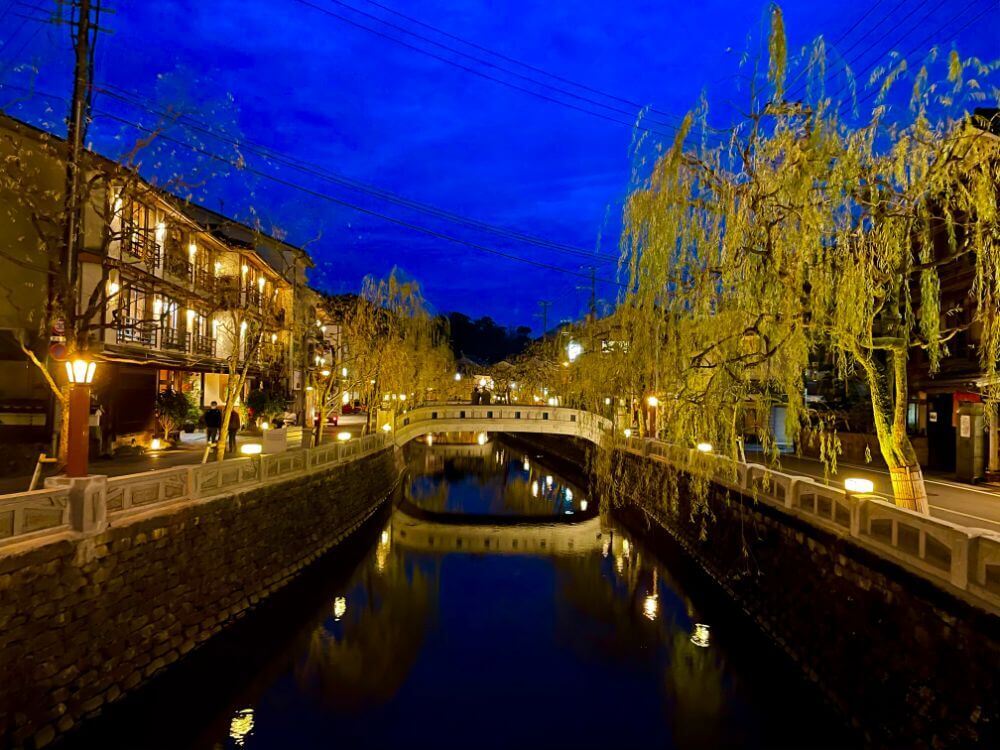 Kinosaki Onsen village has a 1,300 year history and is one of the most popular onsen destinations in western Japan. Being close to the sea means you can enjoy fresh marine products. The area has seven hot spring facilities and many traditional onsen hotels. The “Yu-meguri” tour is particularly popular, since it allows you to visit several of the onsen in a single day. The “onsengai”, or main village street, is lined with multiple restaurants and souvenir shops. Slip on your yukata cotton robe, pack your towel in your wicker hand basket, and set off for a stroll and a browse around the shops.Audio Guide
Kinosaki Onsen village has a 1,300 year history and is one of the most popular onsen destinations in western Japan. Being close to the sea means you can enjoy fresh marine products. The area has seven hot spring facilities and many traditional onsen hotels. The “Yu-meguri” tour is particularly popular, since it allows you to visit several of the onsen in a single day. The “onsengai”, or main village street, is lined with multiple restaurants and souvenir shops. Slip on your yukata cotton robe, pack your towel in your wicker hand basket, and set off for a stroll and a browse around the shops.Audio Guide -
These sand dunes, located in San'in Kaigan UNESCO Global Geopark, boast the largest undulations in Japan. This stunning and expansive landscape was formed by sand being carried by winds over countless years. Some 146 ha of this area has been designated a Natural Monument thanks to its particular beauty. Beautiful geographical features unique to sand dunes can be seen here: ripples, streaks, and columns. You can also enjoy a camel ride experience and a range of outdoor sports.Audio Guide
-
Stretching from the eastern edge of Kyotango City to the western edge of Tottori City, San'in Kaigan UNESCO Global Geopark measures some 120 km from east to west. Here you can observe diverse coastal terrain, such as rias shorelines and sand dunes, shaped by fluctuating sea levels and crustal movements. Walking courses traverse each area of the geopark. You can also take marine tours which offer spectacular views of the Geopark's uniquely shaped rock formations and giant boulders from the water, or take in the sights along One of multiple driving courses. This is nature at its most powerfully spectacular.Audio Guide
